Guillermo Cerdá
OBSOLETE LETTERPRESS
Obsolete Letterpress is a letterpress workshop based in Valecia, Spain, set up by former chef Guillermo Cerdá. Passionate about typography, Guillermo doesn’t consider himself a designer but rather a self-taught craftsman who keeps the ancient process of letter pressing from extinction.
Guillermo tells us about the beginnings of Obsolete Letterpress, the main challenges he’s come across whilst running his own business and how he’s learnt everything he knows from trial and error.
Photos by Carmen Gray
Please introduce yourself and tell us a little about your background.
I’m 32 years old and I have worked as an industrial designer and a chef. I also studied architecture but didn’t finish my degree. I worked as a chef in Michelin-starred restaurants for a few years years, but I got tired of the cook’s life: long working hours, stress, working when all your friends go out and have nice dinners and parties, etc. I also had my own design studio with two partners but also got tired as it was too boring. Now, I think I’m doing a similar thing to what I used to do as a chef but enjoying it much more: working with my hands to create delicate things.
What made you start Obsolete Letterpress?
Mainly curiosity and taste for old objects and processes. I didn’t know much about printing or even typography – I still don’t know much about it either! The learning process has been really exciting for me – it began as a hobby and has become my job!
Tell us about the letterpress process – what is your favourite part? Do you have a favourite typeface?
It is a slow process that requires tons of patience. You have to make lots of adjustments in the machine and the cast until you are ready to print properly. Sometimes it takes just half an hour, and sometimes it can be a whole morning trying to solve an unknown problem… it can be exasperating. Fortunately, I’m now starting to “dominate” the machine and those adjustment times are decreasing. My favourite part is, without a doubt, when you get the first printed copy in your hands. It’s really exciting because the final product is always different from what you figured out in your head – usually much nicer!
My favourite typefaces are timeless classics: Bodoni and Futura. Both typefaces have lasted so much in time because they are perfect. Bodoni is from the late nineteenth century and it is very contemporary. Same for Futura, from 1927. In my workshop I have amazing Spanish variations of Futura. Spanish type foundries didn’t have the licence to produce them (German type foundry Bauer were the owners and in Spain Fundición Neufville was the only one that could commercialise it) so they did “imitations” with really curious – and sometimes weird – variations. I don’t like to call them imitations because, even if they’re really similar to Futura, they have their own personality, as for example Electra from Fundición Tipográfica Nacional. I also like Superveloz very much, a Spanish modular type created in 1942 by Joan Trochut – grandfather of the talented graphic designer Alex Trochut. It’s very interesting because you can form thousands of different typefaces and figures with it. It’s really a treasure and I’m fortunate to have it in my collection.
What are the advantages and limitations of letterpress?
Letterpress has a tactile sensation impossible to get with any modern printing process. The most obvious visually is the embossing on the paper, but I also love the imperfections of the wood and lead letters. The direct colours are also amazing, really bright and impossible to get with a CMYK mix. Regarding the limitations: you can only print one colour each time and you have a limited quantity and size of typefaces. The latter can be solved with the use of polymers – a process where you can create a plate of any desired design and, therefore, print whatever you like. I find these limitations delighting, they are a challenge somehow. Having all the possibilities in the world when starting a design – like when you use a computer – can be horrifying!
Where do you draw your inspiration from?
I don’t see myself as an artist or anything similar, but more like a craftsman, so it’ s difficult for me to speak about “inspiration”. Having said that, I’m now working on some personal projects in which I like to pay homage to Dadaism, Futurism or Constructivism. I also enjoy anonymous old stuff from the first half of the twentieth century, such as old ads, matchboxes, stamps, postcards… that kind of things you can find in a flea market.
You use recycled paper and soy-based inks, tell us a little more about the materials in your workshop.
In Spain it’s not easy to find eco-friendly materials in the printing industry, so it has been a hard challenge for me to find this kind of materials. At the end, I managed to find lovely people, like the Association of Mentally Handicapped who make their own paper with amazing results. I can order from them any type of paper I need and they do it specifically for me.
You develop many types of different projects – are you more keen on any in particular? Is there any dream project you’d like to be involved in?
I love the projects in which I have to do something I’ve never done before, because it allows me to experiment with something new, and that’s exciting. My dream is to have a solid editorial project, releasing special editions and weird things I like… and I’m going to launch it soon! In September, I will release my first artwork as a publisher, a collection of 8 prints, letterpress printed in two colours with humorous nonsense poems by Edward Lear and illustrated by Marta Monteiro. Lear is a great English writer from the the nineteenth century, precursor to Surrealists and Dadaists, and Marta is a great Portuguese illustrator who has worked for publications such as The New York Times, Washington Post or Nobrow… And I managed to trick her into working with me on this. I’m very happy!
Who are your favourite designers?
I like anonymous design on vintage stuff, rather than big names in the history or present of design. If I have to say names of people whose work I admire, I have to mention some of my favourite guys from the avantgarde: Rodchenko, Moholy-Nagy and his friend Kassák, El Lissitzky, the fantastic and almost unknown work of Kurt Schwitters as graphic designer… In industrial design, I would say Eames as paradigm of what a designer should be. From current designers, I like the conceptual work of Martí Guixé, and also the guys from La Mamba and their own design publishing brand Omelette Ed. They’re great designers and friends of mine, brave people who have created something nice from scratch.
What’s been the biggest challenge you’ve overcome so far in your business?
I couldn’t really tell. For me, this project is like a constant sprint because I’m a workaholic. I think this is the only possible way to make a crazy project like this work. At the beginning, I had to start everything from scratch. I had to do all the furniture with pallets because I had no money and I wasn’t even able to turn on the machines. After that, I learnt how to print, how to do my own polymer plate and work with perfect register. The main problem was to find someone who could teach me, because this profession has almost disappeared or people are too old and usually have health problems which makes it very difficult to arrange a meeting with them. This week I’m going to print the whole stationery for a new wine cellar, the biggest commission I have done so far. Next week I will have a new printing machine in my workshop (which of course, I have no idea about how to use). It’s not a letterpress machine, but is also obsolete stuff… Ah, I forgot! Doing all the paperwork is also a constant and boring challenge.

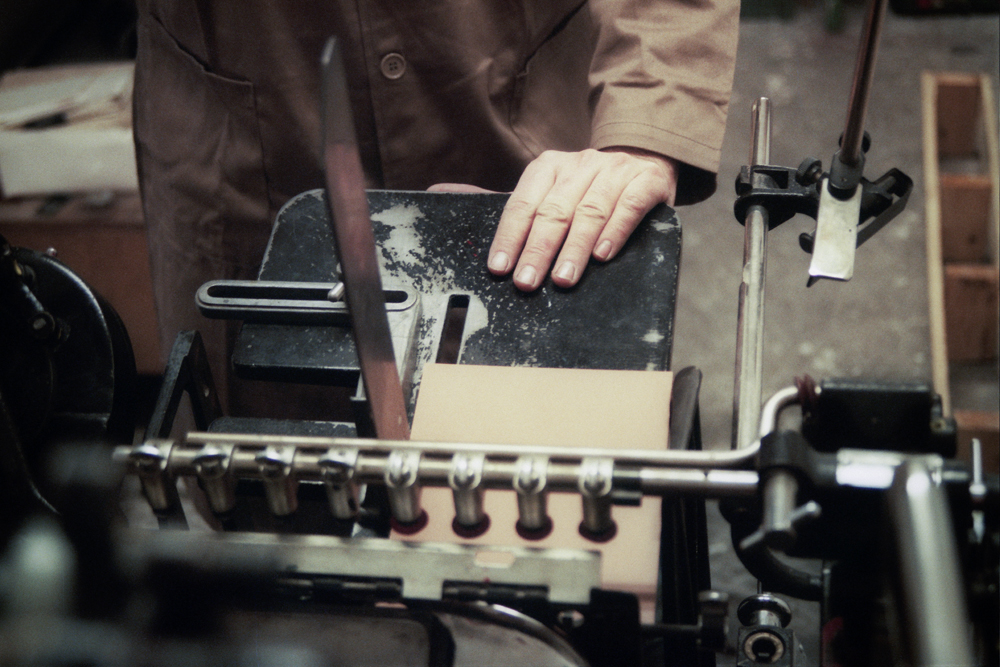
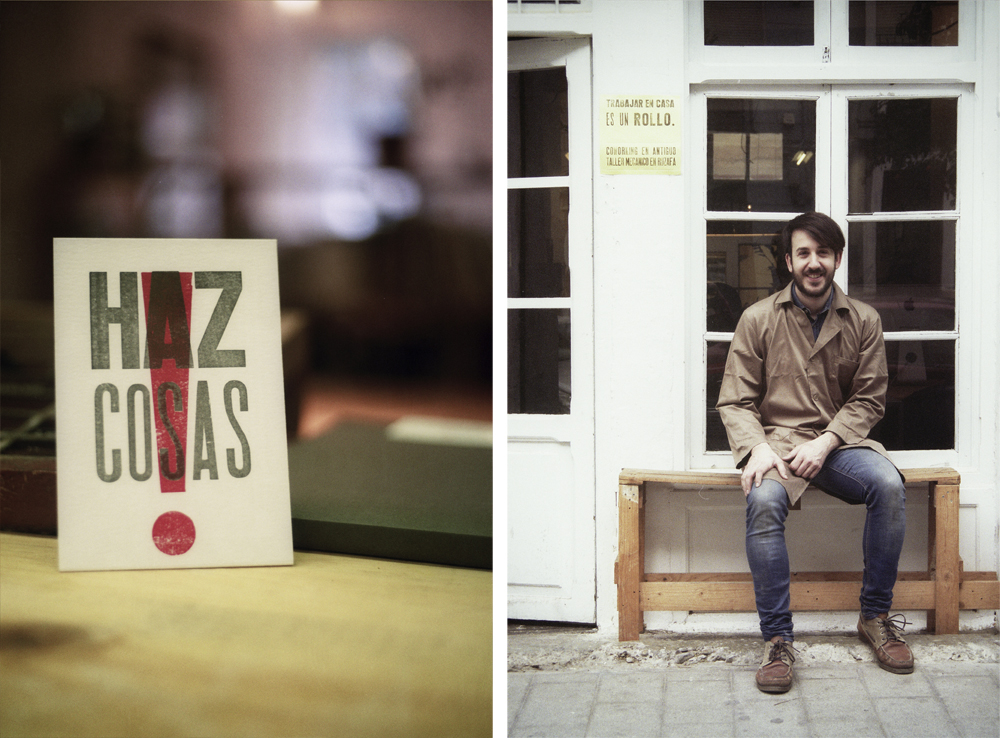
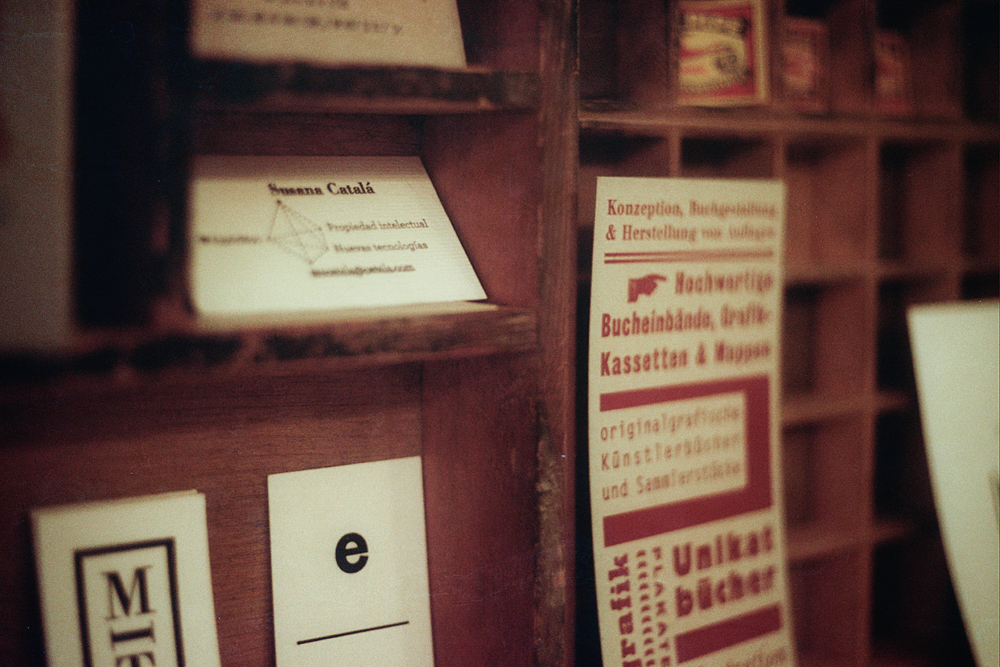
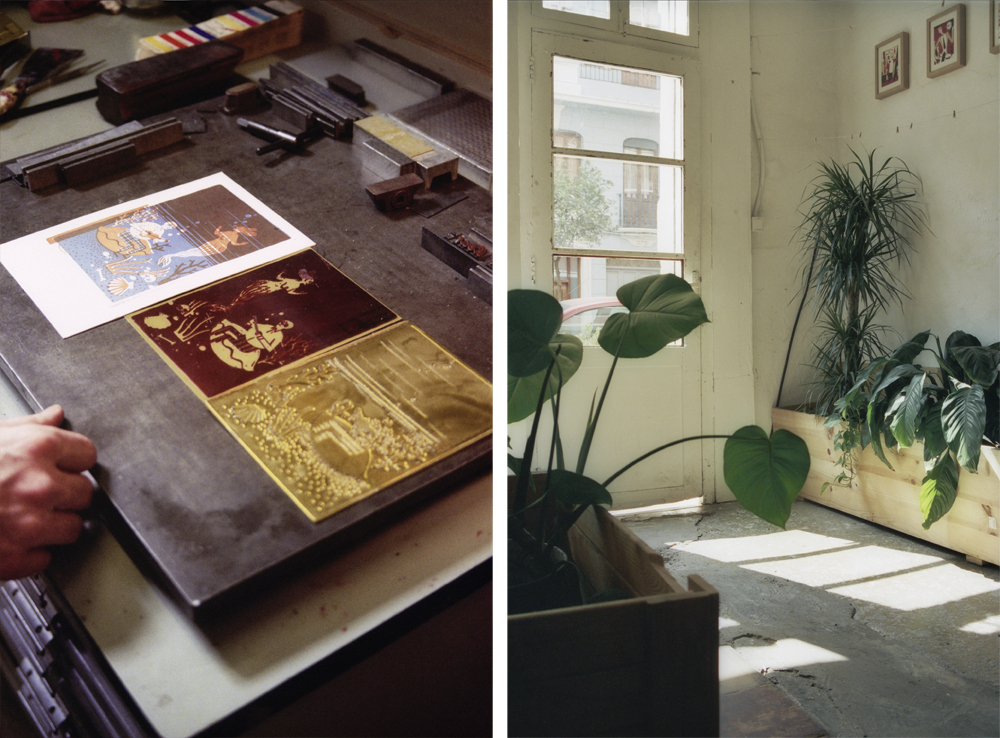
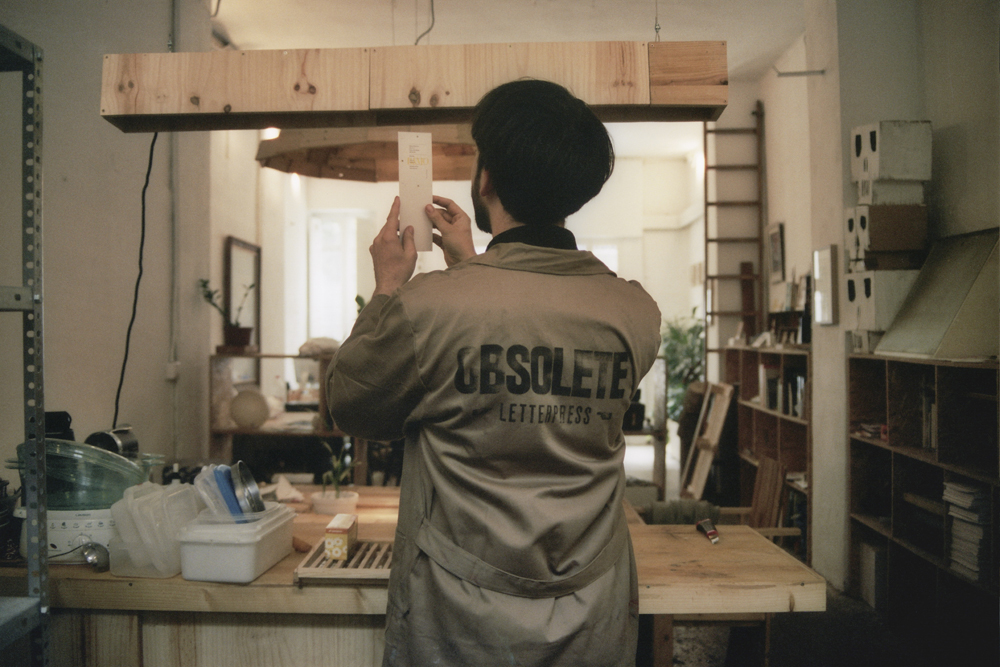
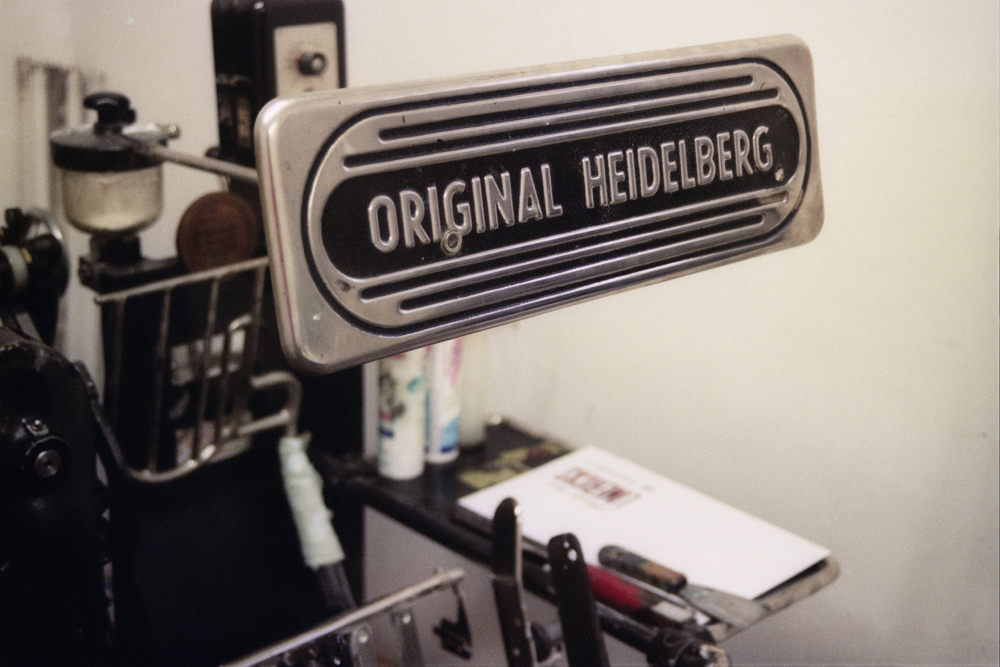
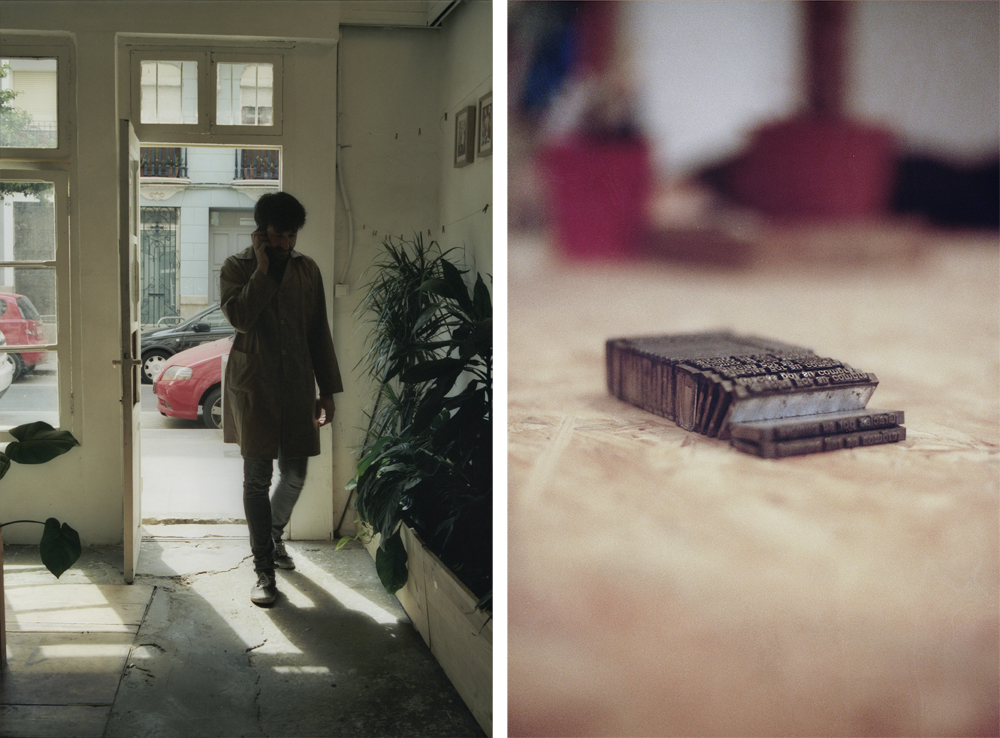
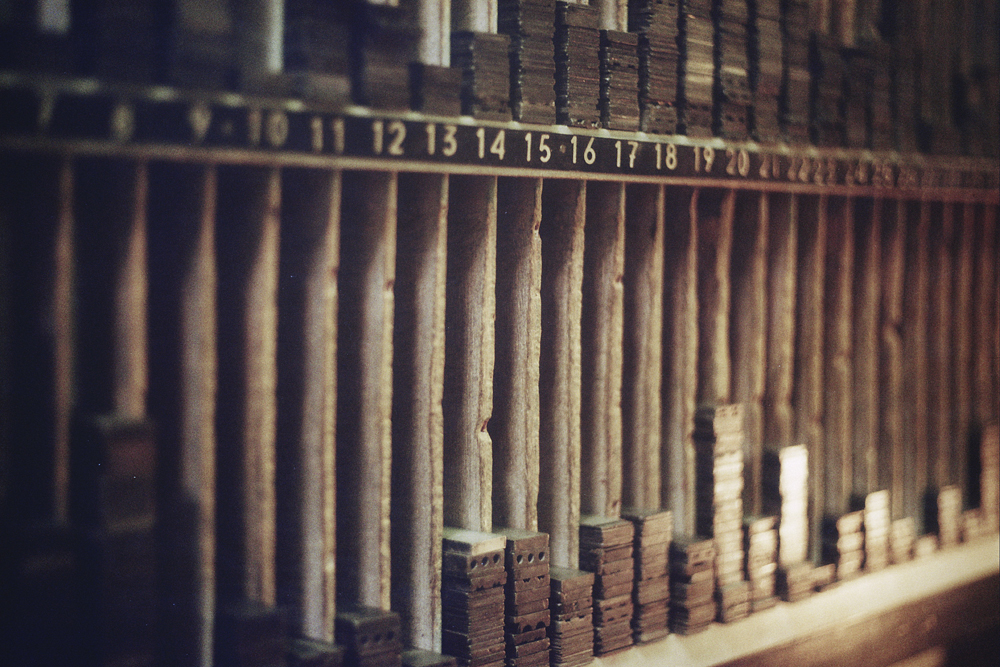
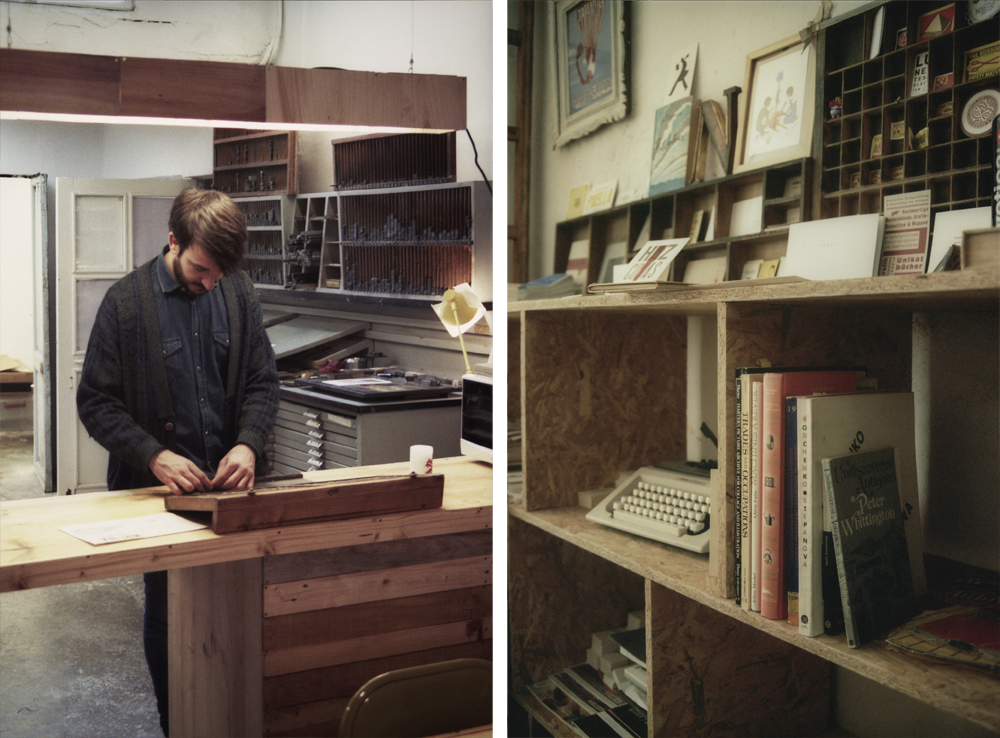
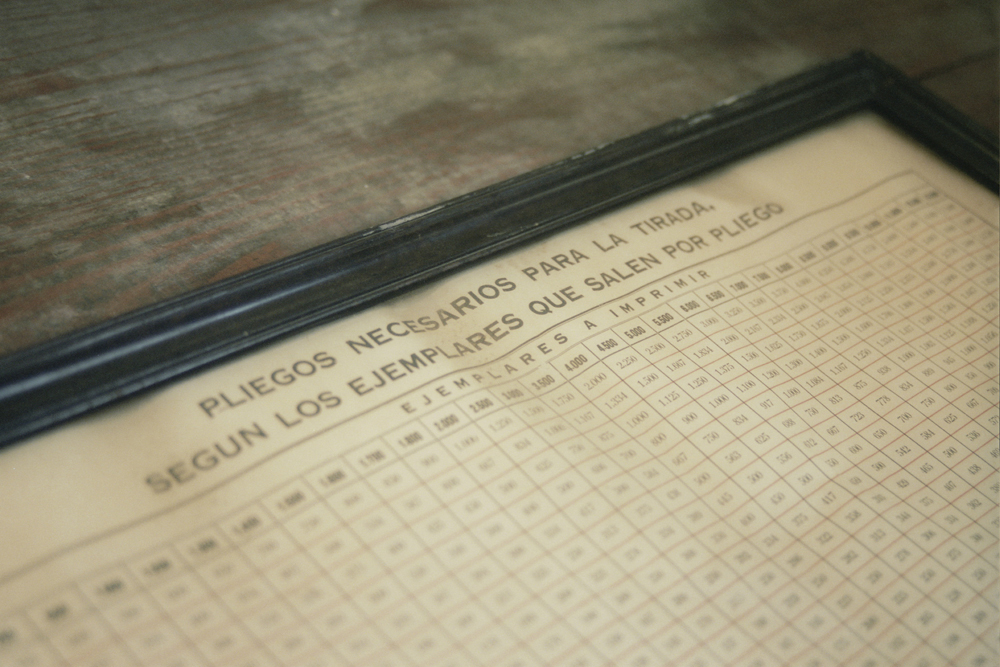
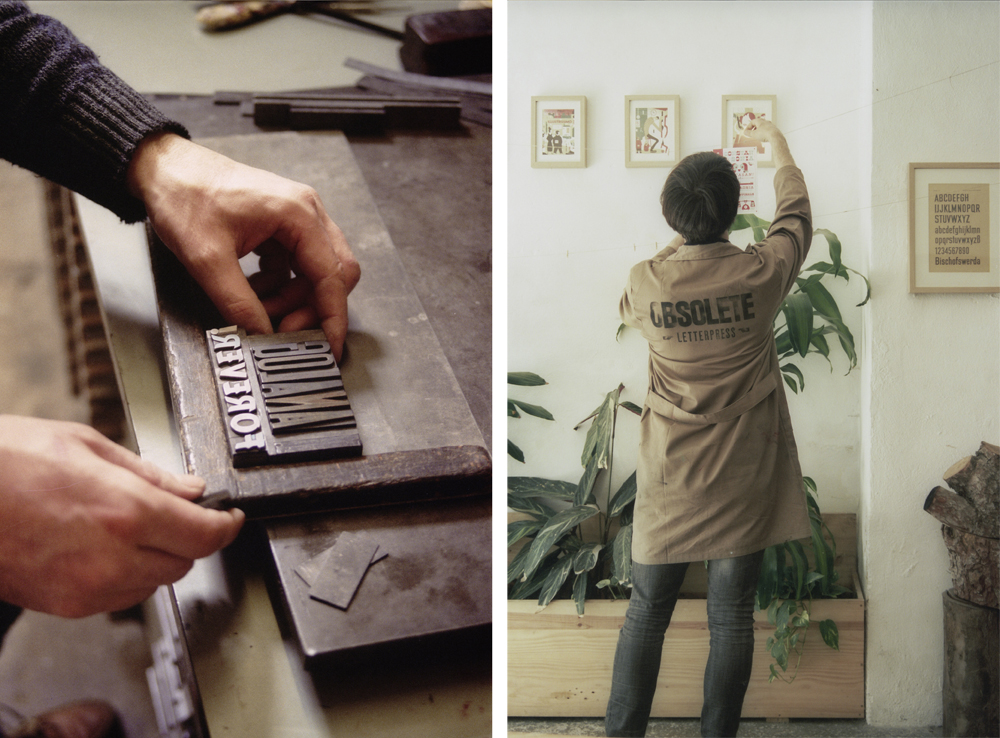
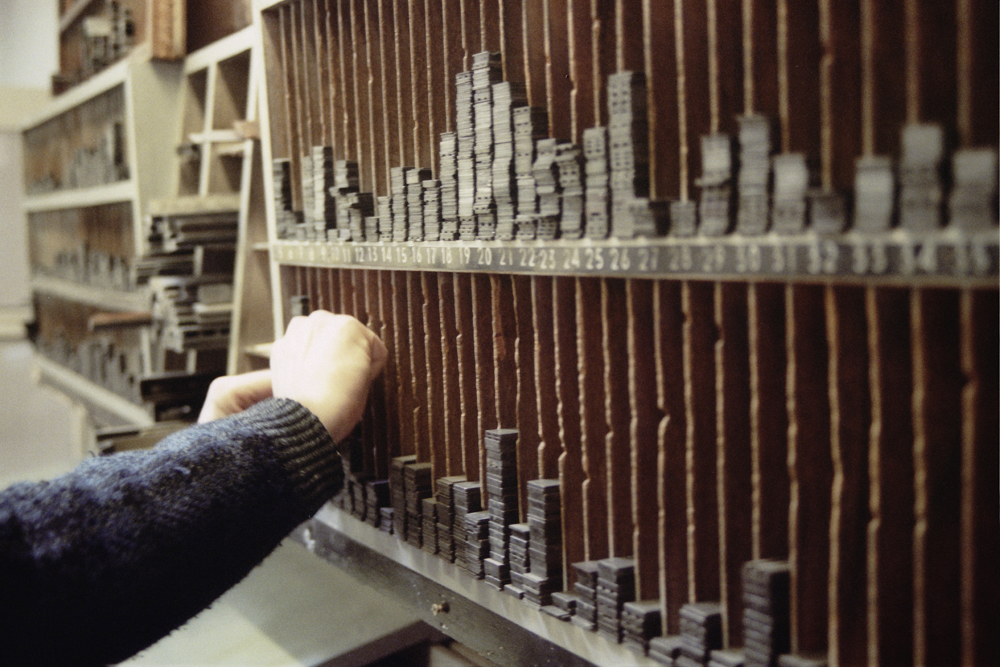
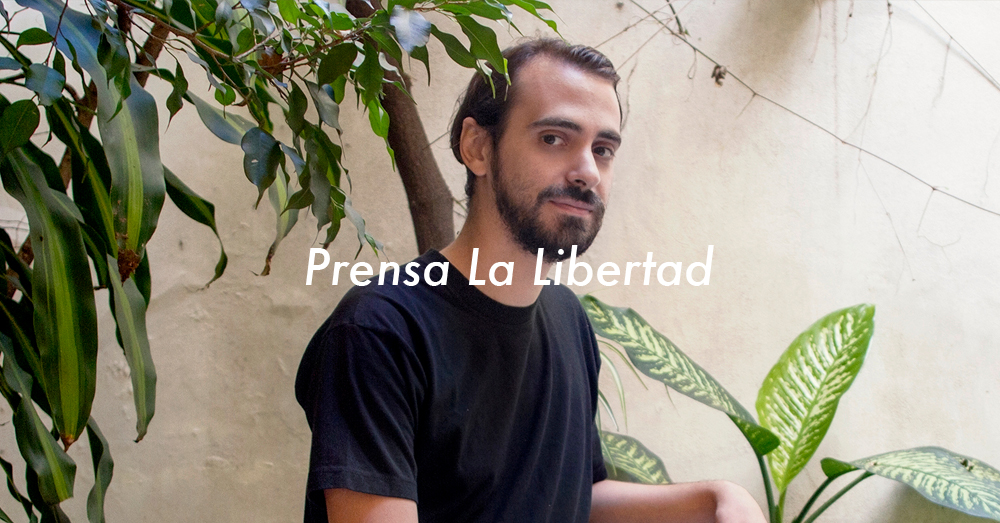
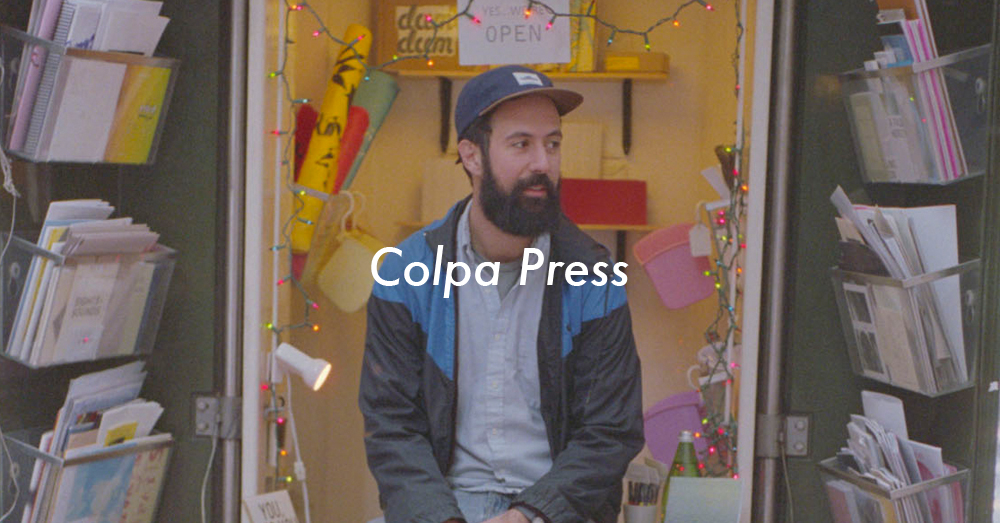
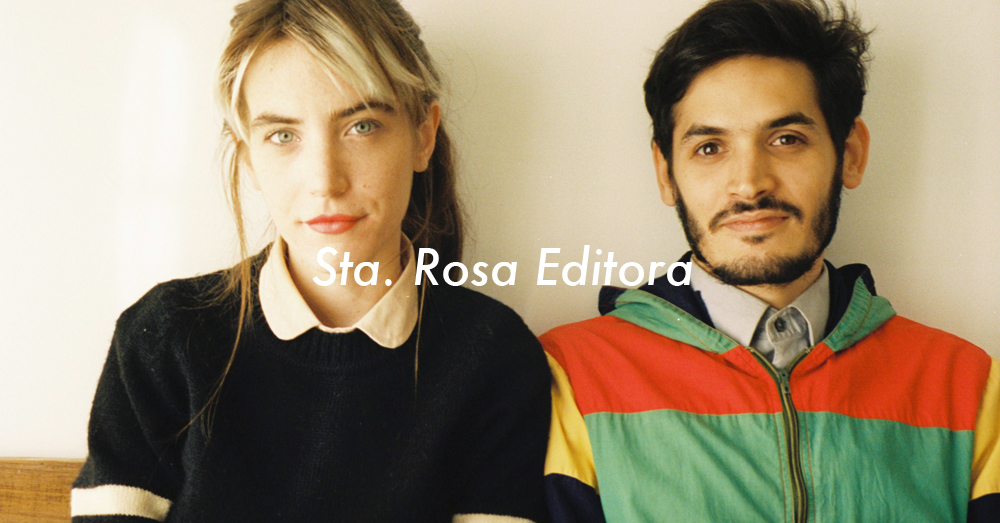
One Comment on “Obsolete Letterpress”
Hi is it able to get the reference information about this interview as I would like to use a quote in my dissertation? If possible, I would like to know the date it took place and also where it took place?
Thank you.